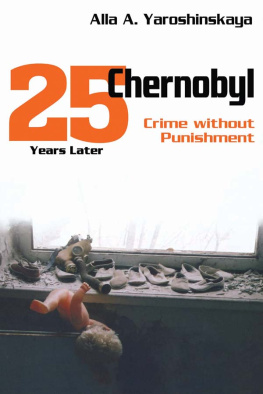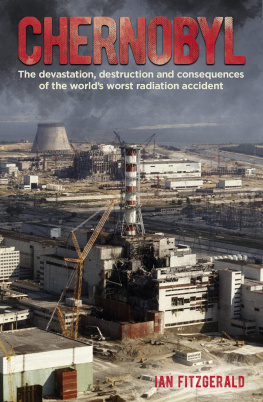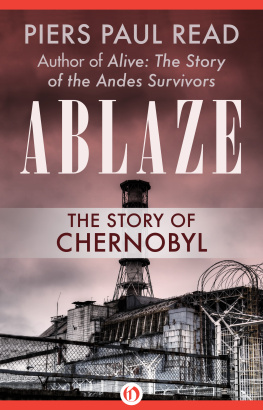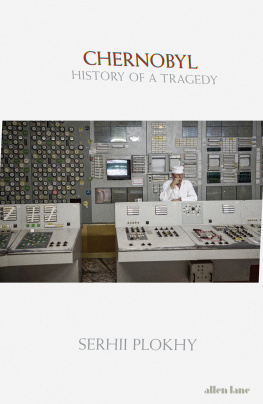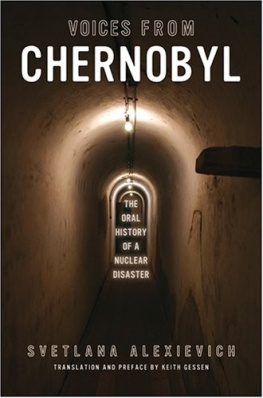Chernobyl
Chernobyl
Crime without
Punishment
Alla A. Yaroshinskaya
Transaction Publishers
New Brunswick (U.S.A.) and London (U.K.)
Copyright 2011 by Alla Yaroshinskaya. Originally published in 2006 by Vremya.
The author wishes to express her thanks to Rosalie Bertell and Lynn Ehrle for their voluntary editing of the translation of this volume and also the Nuclear Age Peace Foundation and Engineers and Scientists for Global Responsibility for their financial support of the translation.
All rights reserved under International and Pan-American Copyright Conventions. No part of this book may be reproduced or transmitted in any form or by any means, electronic or mechanical, including photocopy, recording, or any information storage and retrieval system, without prior permission in writing from the publisher. All inquiries should be addressed to Transaction Publishers, RutgersThe State University of New Jersey, 35 Berrue Circle, Piscataway, New Jersey 08854-8042. www.transactionpub.com
This book is printed on acid-free paper that meets the American National Standard for Permanence of Paper for Printed Library Materials.
Library of Congress Catalog Number: 2011017274
ISBN: 978-1-4128-4296-9
Printed in the United States of America
Library of Congress Cataloging-in-Publication Data
Yaroshinska, Alla.
[Chernobyl 20 let spustia. English]
Chernobyl : crime without punishment/Alla A. Yaroshinskaya; [translated from Russian by Sergei Roy].North American ed./ edited by Rosalie Bertell and Lynn Howard Ehrle.
p. cm.
ISBN 978-1-4128-4296-9
1. Chernobyl Nuclear Accident, Chornobyl, Ukraine, 1986 Environmental aspects. 2. Chernobyl Nuclear Accident, Chornobyl, Ukraine, 1986Social aspects. 3. Radioactive pollutionUkraineChornobyl Region. 4. Soviet Union Politics and government19851991. I. Bertell, Rosalie, 1929 II. Ehrle, Lynn. III. Title.
TK1362.U38Y36513 2011
363.17'99094777dc23
2011017274
Contents
Introduction
On April 26, 1986, about seven years after the Three Mile Island nuclear accident, the nuclear reactor at Chernobyl experienced an explosion, meltdown, fire, and massive release of radioactivity. The International Atomic Energy Agency (IAEA) had been poised to begin a concerted public relations effort to market nuclear power in the developing countries. It had been mandated by the United Nations, when it was founded in response to President Eisenhowers Peaceful Atom Program, to promote nuclear technology to the whole world. Imagine its consternation when the Swedish government proclaimed that the then Soviet Union had experienced a nuclear reactor accident! It had waited patiently until it thought the world had forgotten Three Mile Island!
The first time I visited the failed Chernobyl reactor site, I saw that it was in prime agricultural and orchard land. In fact, it was even called the breadbasket of the Soviet Union. Prypiat, the nearest city to Chernobyl, was a place where the ancient art of icon painting had begun, and its library contained many priceless icons from the Middle Ages. Prypiat was a modern city prior to the disaster. It had high-rise apartment buildings, a new school with a large playground, and a public library. Looking in through the library windows, I could see the precious icons strewn on the floor together with books and other debrisnow all radioactive waste. The school swings and slides stood waiting for children and the apartment buildings were empty, all of the windows closed against the spring air, and the streets were empty.
This area was inside the exclusion zone. We had driven from Kiev to the border of the exclusion zone and then transferred to buses that only operated within the zone. Surrounding the city of Prypiat and the failed reactor were blooming apple and cherry trees and even a few elderly people who refused to leave the land they knew so well.
I learned that the people of Prypiat were country people with a volunteer fire department that was first on the scene when the accident occurred. Like other rural fire departments, the wives relieved their husbands in the early days of the fire so they could have a meal and take some rest. Because of years of indoctrination by radiation experts who claimed nuclear reactors posed no risk, children played in the yards or went to the store and people stood out in the street watching the fire. When buses finally arrived to remove them from harms way, many refused to leave their farms and farm animals. The Soviets had to round up the animals (and kill them later when the farmers were gone) before people would evacuate.
There was a forest, heavily contaminated, which had been cut down and buried. There was one tree still standing, one with a branch that had grown strong and lay parallel with the ground. The people told me that this tree was used during the Nazi occupation of Ukraine in World War II as the hanging place for patriots. There were wreaths of flowers around the base of this tree and remembrance candles. It would not be buried like the rest of the trees!
We saw the burying ground for the large trucks and diggers that had been brought in to fight the blaze. We also met the young men who were running the other nuclear reactors on the sitewalking every day by the failed reactor, (which was) still fissioning and spewing out radioactive materials. As we neared the reactor, my Geiger counter registered quite a high reading, and my camera film was overexposed so that none of the pictures I took turned out.
The following account, by reporter Paul Hofheinz in Moscow, appeared in the July 20, 1987 issue of Time magazine.
Soon after the Chernobyl meltdown, Soviet officials ordered the permanent evacuation of villages within 30 km (19 miles) of the power plant, but heavy nuclear fallout covered a much broader area. In some parts of Narodichi, a Ukrainian agricultural district whose boundaries lie some 60 km (37 miles) from the reactor, levels of radioactivity are still nine times as high as the acceptable limits, according to the local Communist Party chief.
Vladimir Lysovsky, a doctor at Narodichi District Central Hospital, contends that in the past 18 months, there has been a dramatic rise in cases of thyroid disease, anemia and cancer. Residents also have begun complaining of fatigue and loss of vision and appetiteall symptoms of radiation sickness. Worst of all, there has been a startling drop in the immunity level of the entire population. Healthy people are having trouble getting over their illnesses, Lysovsky notes. And children are the most affected.
Farmers, meanwhile, are seeing an explosion of birth defects among livestock. Colts have appeared with eight limbs, deformed lower jaws and disjointed spinal columns. Photographer Kostin reports that 197 freak calves have been born at the Yuri Gagarin collective farm in Vyazovka. Some of the animals had no eyes, deformed skulls and distorted mouths. At a farm in Malinovka, about 200 abnormal piglets have been born since the accident.
Later, I met the woman doctor who had been in charge of the emergency medical tent set up for the so-called liquidators of the fire. She decided who would be sent to Hospital 10 in Moscow for special treatment for radiation sickness. She was upset when I first met her because a young woman, a well-trained laboratory technician, whom she chose to take with her to help in the clinic, had just died. She was twenty-eight years old and had been in good health prior to the disaster. I asked about her death, and the doctor told me she died of adult sudden death, adding, I never thought I was giving these young people a death sentence. I chose the best we had!

